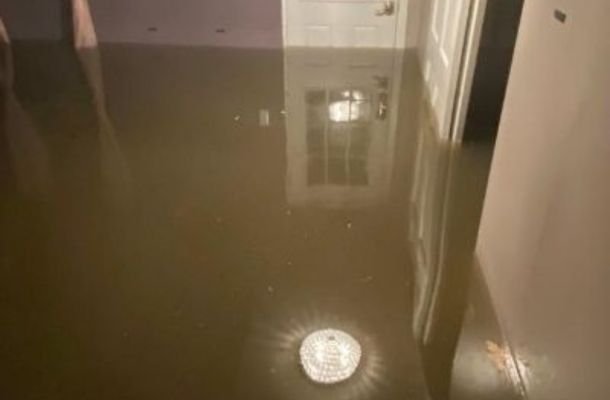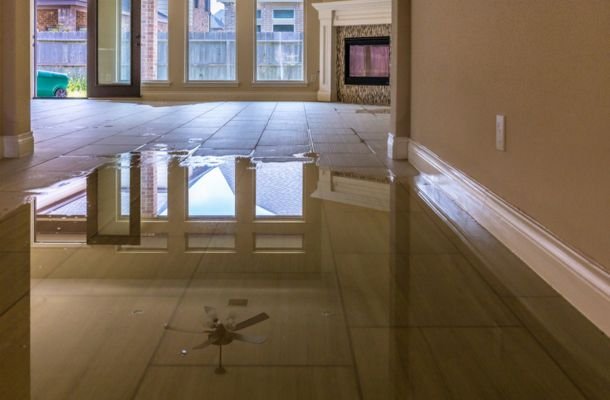Basement flooding can be a homeowner’s nightmare, causing significant damage to property and leading to costly repairs. Fortunately, with the right preventative measures, you can protect your basement from flooding and avoid the headaches that come with it. Here’s expert advice on how to prevent basement flooding effectively.

1. Ensure Proper Grading Around Your Home
Why It Matters
The slope of the ground around your home plays a crucial role in directing water away from your foundation. Poor grading can lead to water pooling around the base of your home, increasing the risk of basement flooding.
How to Fix It
- Check the Slope: Ensure that the ground around your home slopes away from the foundation at a rate of about 1 inch per foot for the first 6 to 10 feet.
- Add Soil: If needed, add soil to create a better slope. Be sure to use soil that compacts well, such as clay, to prevent erosion.
2. Maintain Your Gutters and Downspouts
Why It Matters
Gutters and downspouts are your home’s first line of defense against water damage. Clogged or damaged gutters can cause water to overflow and accumulate around your foundation.
How to Fix It
- Clean Regularly: Clean your gutters at least twice a year, removing leaves, debris, and any obstructions.
- Check for Damage: Inspect your gutters and downspouts for cracks, holes, or other damage and repair them promptly.
- Extend Downspouts: Ensure downspouts extend at least 4 to 6 feet away from your foundation. Consider adding extensions if necessary to direct water further away.
3. Install a Sump Pump
Why It Matters
A sump pump is an essential tool for preventing basement flooding, especially in areas prone to heavy rainfall or high water tables. It collects and pumps out excess water that accumulates in the sump basin, preventing it from flooding your basement.
How to Install It
- Choose the Right Pump: Select a sump pump based on the size of your basement and the expected volume of water. Submersible pumps are generally more powerful and quieter than pedestal pumps.
- Professional Installation: While some homeowners install sump pumps themselves, professional installation ensures it’s done correctly and includes essential components like a check valve and a backup power source.
4. Waterproof Your Basement Walls
Why It Matters
Water can seep through cracks in your basement walls, leading to dampness, mold, and flooding. Waterproofing your basement walls helps create a barrier that prevents water infiltration.
How to Do It
- Seal Cracks: Use hydraulic cement or waterproof sealant to fill in any cracks or gaps in the walls.
- Apply Waterproof Coating: Apply a waterproof coating or membrane to the interior or exterior walls. Interior waterproofing is easier and less expensive, but exterior waterproofing is more effective in preventing water from entering the basement in the first place.
- Consider a Drainage System: If you have a persistent water problem, consider installing a drainage system around the perimeter of your basement to channel water away before it can cause damage.
5. Install a Backwater Valve
Why It Matters
A backwater valve prevents sewage from backing up into your basement during heavy rainfall or a sewer blockage. This device is particularly important if your home is connected to a municipal sewer system.
How to Install It
- Professional Installation: Installing a backwater valve typically requires cutting into the main sewer line, so it’s best to hire a licensed plumber for this job.
- Regular Maintenance: Once installed, regularly check and clean the valve to ensure it functions properly.
6. Regularly Inspect and Maintain Your Home’s Plumbing
Why It Matters
Leaking or burst pipes can cause significant water damage, leading to basement flooding. Regular inspection and maintenance of your home’s plumbing system can help prevent these issues.
How to Do It
- Inspect Pipes: Regularly check for signs of wear, corrosion, or leaks in your pipes. Pay close attention to areas around sinks, toilets, and appliances.
- Install a Leak Detection System: Consider installing a leak detection system that alerts you to potential leaks in your plumbing.
- Replace Aging Pipes: If your home has old or deteriorating pipes, consider having them replaced to prevent potential failures.
7. Keep Your Basement Drains Clear
Why It Matters
Basement floor drains are designed to carry away water that might enter your basement. If these drains become clogged, they can’t do their job effectively, leading to flooding.
How to Keep Drains Clear
- Regular Cleaning: Periodically pour a bucket of water into the drain to ensure it’s clear and draining properly.
- Use a Drain Snake: If you notice slow drainage, use a drain snake to clear any blockages.
- Install Drain Covers: Consider installing drain covers to prevent debris from entering and clogging the drains.
8. Test Your Sump Pump Regularly
Why It Matters
A sump pump is only effective if it’s working properly. Regular testing ensures that your pump will be ready when you need it most.
How to Test It
- Check the Power: Make sure the pump is plugged in and the circuit breaker hasn’t tripped.
- Test the Float Switch: Pour water into the sump pit until the float rises. The pump should activate and start draining the water.
- Inspect the Discharge Line: Ensure the discharge line is clear and directing water away from your home.

9. Be Prepared with a Backup Plan
Why It Matters
Even with the best preventative measures, unforeseen circumstances like power outages or severe storms can still lead to basement flooding. Having a backup plan ensures you’re prepared for the unexpected.
What to Include in Your Backup Plan
- Backup Power for Sump Pump: Consider installing a battery backup or a generator to keep your sump pump running during a power outage.
- Emergency Contact List: Keep a list of emergency contacts, including a plumber and water damage restoration company, in case of a flooding emergency.
- Flood Insurance: Ensure your homeowner’s insurance policy includes flood coverage, particularly if you live in a flood-prone area.
By following these expert tips, you can significantly reduce the risk of basement flooding and protect your home from water damage. Regular maintenance, proper installation of flood prevention devices, and being prepared for emergencies are key to keeping your basement dry and your home safe.

